Seattle, Washington is home to Amazon’s headquarters. The online retailer has worked relentlessly to incorporate itself with its metropolitan backdrop, developing urban plans that include a variety of buildings, plazas, and other open spaces for the public to enjoy. One such addition that not only contributes to Amazon’s presence in Seattle, but serves as a demonstration of the company’s position as an industry leader in innovation are the Amazon Spheres.
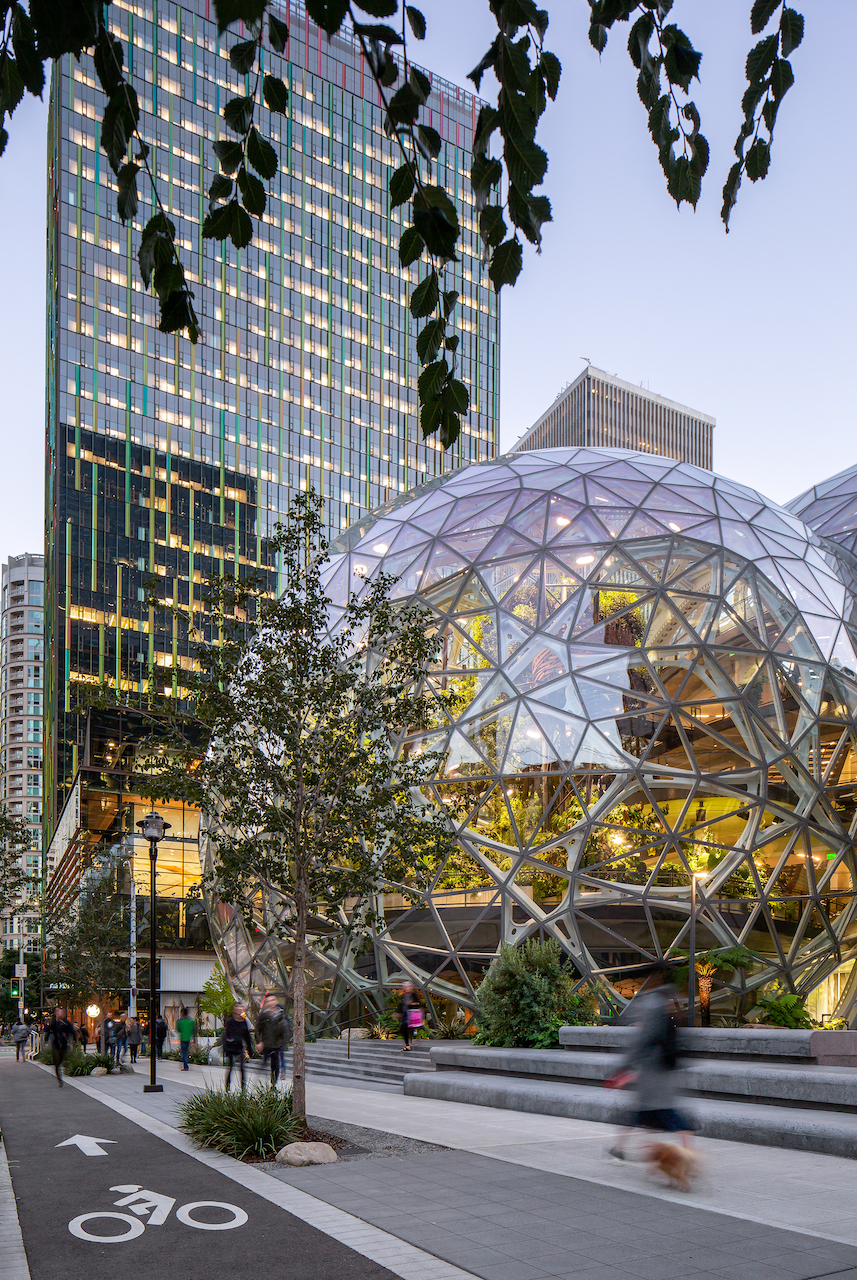
Photography © Sean Airhart
Completed in 2018 and designed by NBBJ, the Amazon spheres are a trio of glass-encased domes, lush with verdant greenery originating from five continents. The build’s multi-level botanical garden houses 40,000 plants, creating a manufactured biome in the heart of Seattle. The thick blanket of flora, accompanied with a manmade waterfall, create a meticulously curated jungle environment. Maintaining the vegetation requires a climate of 72 degrees Fahrenheit and humidity at 60% during the day, with temperatures falling to 55 degrees with 85% humidity at night.
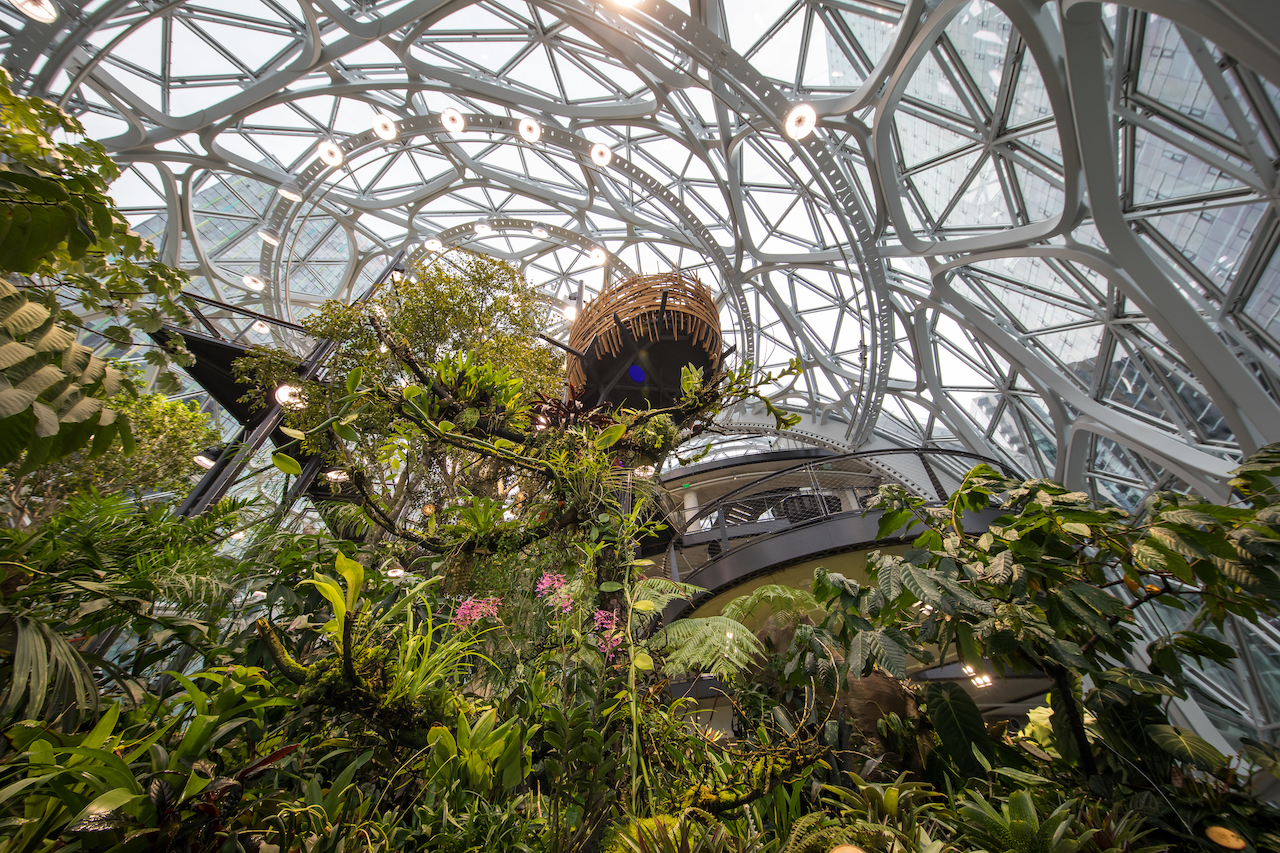
Photography © Sean Airhart
With such a unique, ever-changing environment, specifying products that would endure constant exposure to Seattle’s climate externally and the humid jungle within the spheres was crucial. Scott McConnell, coating consultant for TNW Inc., explains the need for high performance coatings. He states, “The interior workplace surrounds employees with a waterfall, trees, and thousands of plants from around the world. As soon as the building is closed down at night, the humidity is increased to 85%, then it drops down to 60% during business hours. That is why they needed a coating system with long lasting protection.”
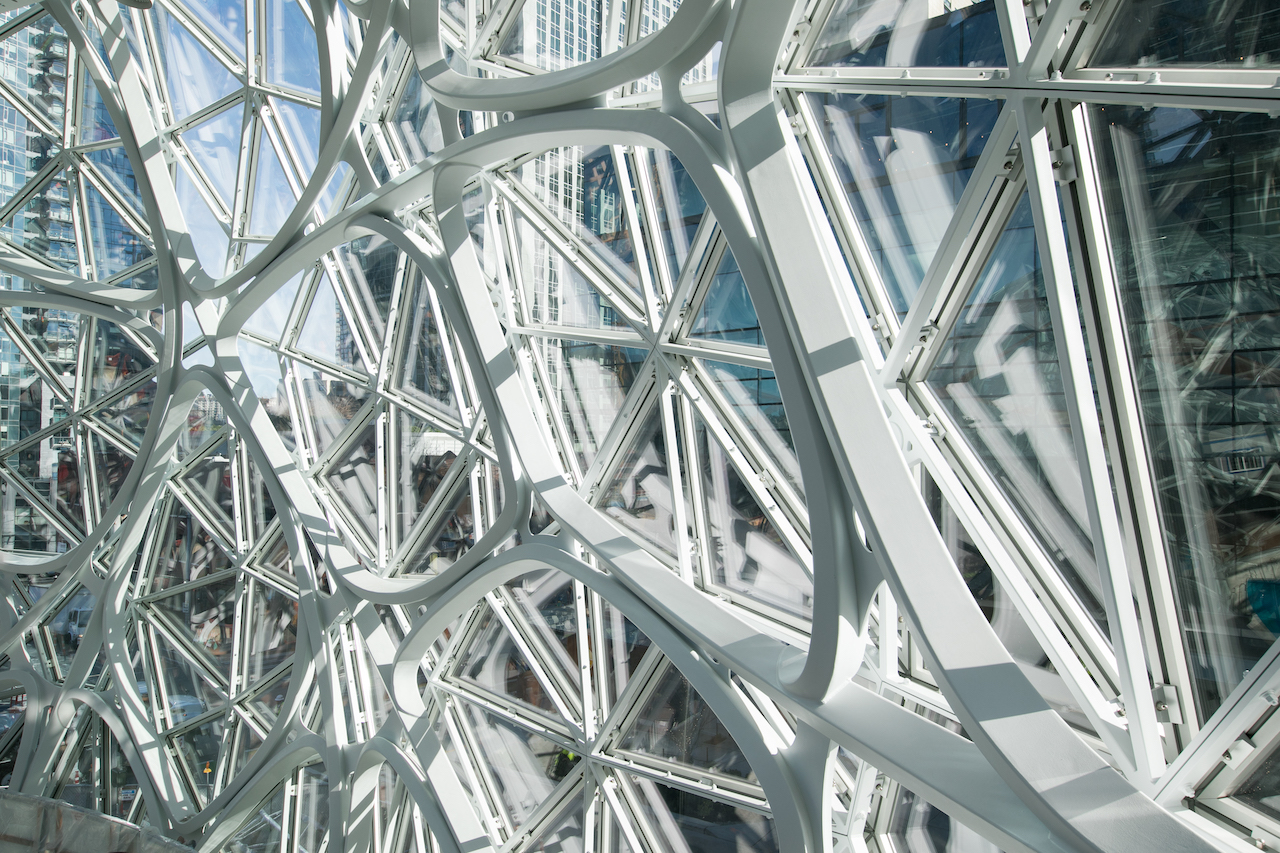
Photography © Sean Airhart
Tnemec’s series 1072V Fluoronar, a low-VOC FEVE fluoropolymer was selected as the coating system’s topcoat. Utilizing Lumiflon FEVE resin technology, Fluoronar provides architectural surfaces with unparalleled weatherability, protecting the Amazon Spheres’ steel structural frame from prolonged exposure to UV radiation, moisture, salt, and other elemental deterrents for decades.
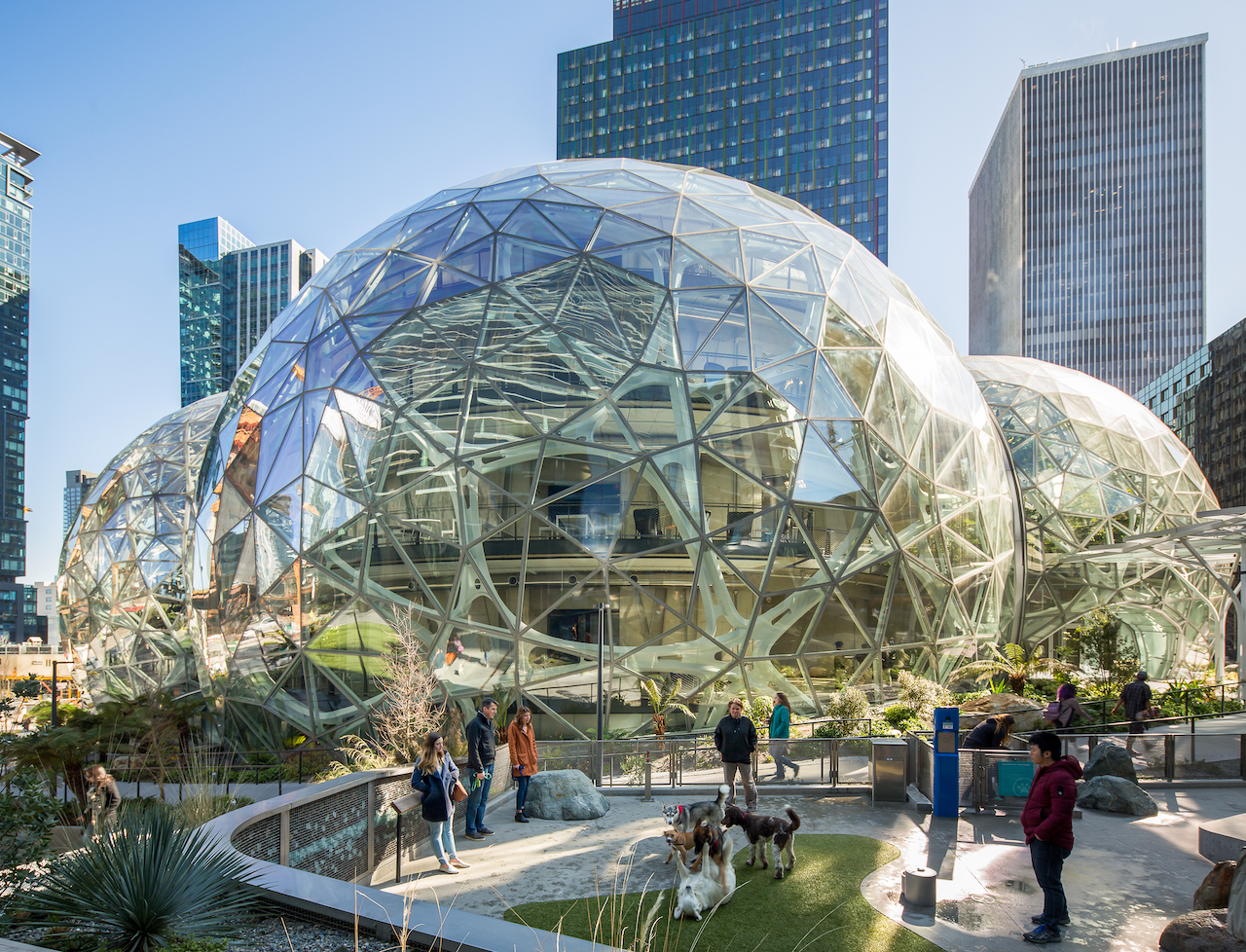
Photography © Sean Airhart
“The projects original specification called for a urethane top coat, but because of the complexity of the environment with all of the plants, trees, and waterfall inside, we changed the specification to a fluoropolymer coating system,” McConnell says, “As it turned out, the change has been extremely beneficial.”
Photography © Sean Airhart
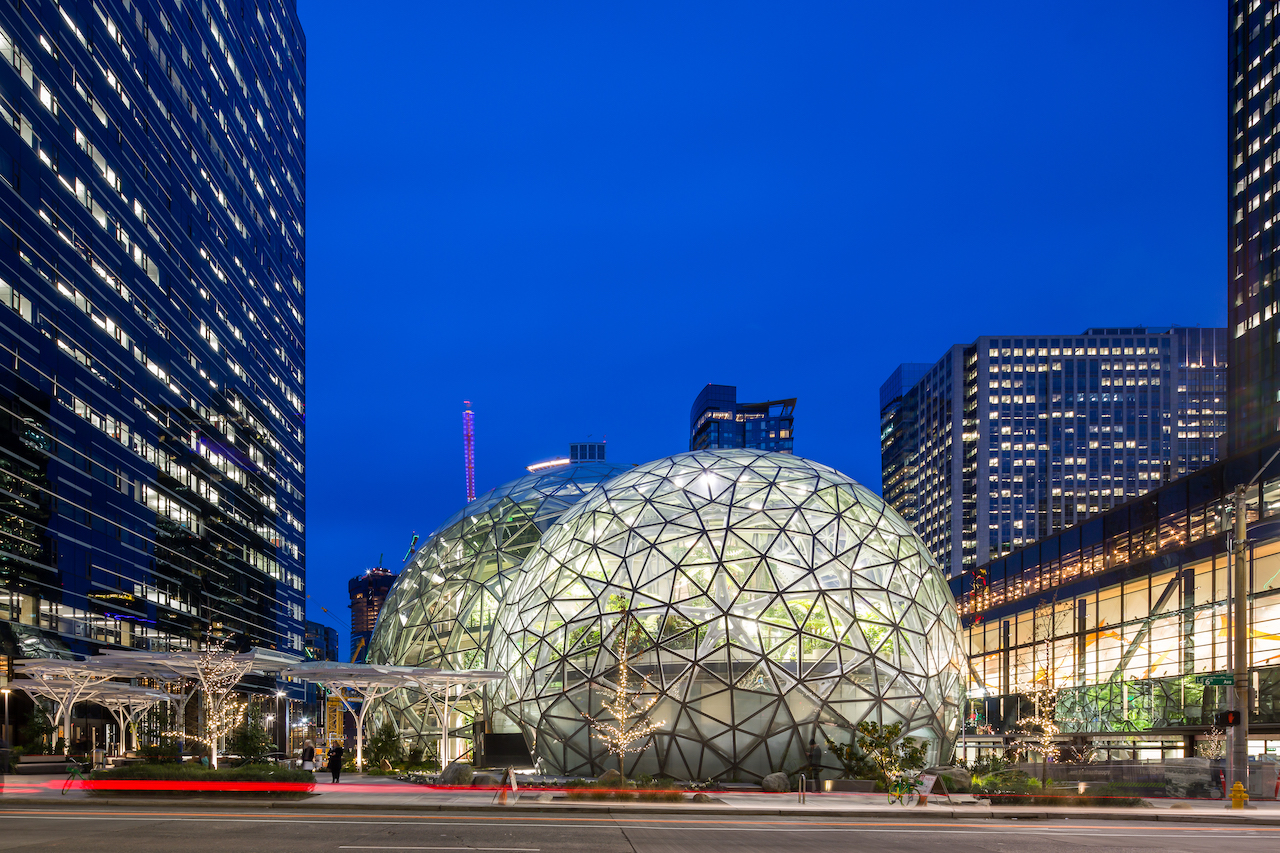
Categories Architecture